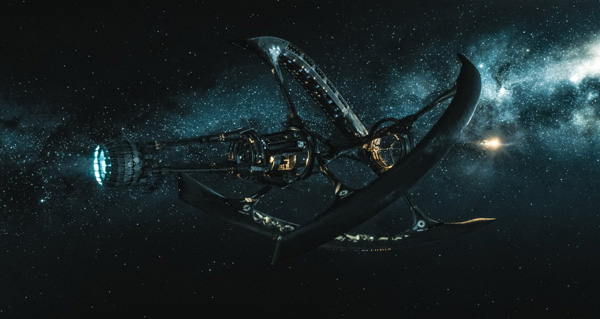
The recent deep space film ‘Passengers’ contains roughly 1,400 visual effects shots that aim to give viewers a vision of the interstellar environment far from our sun and solar system. As lead VFX vendor, MPC completed more than 1,100 of these shots with a team of about 600 artists, led by VFX supervisor Pete Dionne and VFX producer Tomi Nieminen.
The team worked with director Morten Tyldum and production VFX supervisor Erik Nordby, whose main concern for all the effects was realism. The visual effects needed to feel real and consistent to make sure viewers lock into the romantic adventure story from start to finish. Their work included building and animating a massive interstellar starship, FX for a dramatic water sequence at zero gravity and a beautiful red giant star, holograms and digital doubles, but the lights and look of deep space was the subtlest and most pervasive.
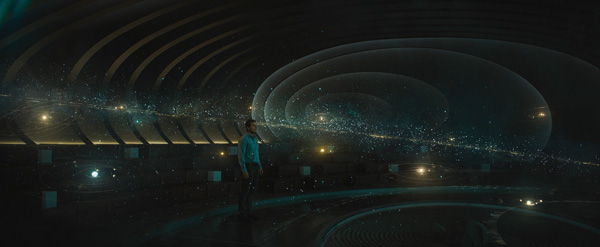
From pre-production, the team put a lot of effort into creating this distant environment. Erik Nordby said, “Historically, the look of space in film falls somewhere between the cold, austere look of actual astrophotography and heavily stylized vistas with false colour and inaccurate scale.” Feeling it was important to visually establish the environment as 'deep space', far from Earth, they chose an ambient, soft-lit lighting design to separate it from photography of our own solar system, the high-contrast sun-lit images that all viewers are familiar with.
The VFX team’s supervisor Pete Dionne joined ‘Passengers’ around two months prior to the start of production. At this point, MPC was already involved in supporting Erik with previs and concept art. Pete said, “As well as fleshing out shooting approaches and requirements with Erik, my key tasks focussed on the development of anything that would influence lighting design within our plates, from establishing the general look of our CG space environment, to generating content for the large LED screens we used for interactive lighting across the sets.”
Seeing Stars
With the cinematographer Rodrigo Prieto ASC, the VFX team constructed an overall dome using a softer lighting ratio determined by hand-painted stars and nebula maps. The result was very different to the high-key space lighting often seen in movies, and these maps then drove the scene-referred lighting for the ship and CG astronauts.
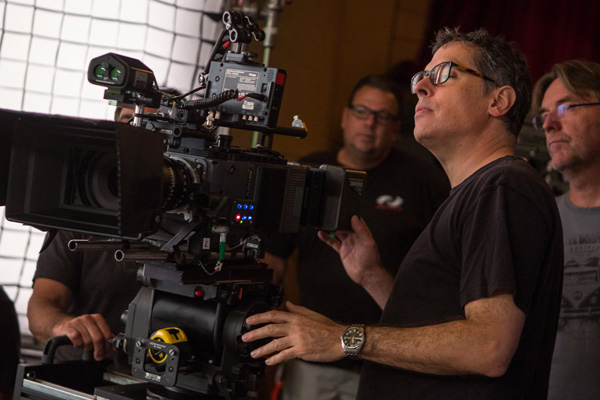
“We built a full 360° dome for our environment, as this needed to service almost 200 exterior space shots covering every angle possible, including large sweeping shots,” said Pete. “We used high-res, long exposure photography of the Milky Way, made up of layers of stars, space dust, nebula and clusters as a foundation, and then embellished over top of it with more articulated and varied gas structures. We rebuilt and separated the distant gas and stars into several layers of depth, as a series of cards, to introduce very subtle parallax as the camera travels with the ship. We spent a lot of time developing this complex set-up, but it gave us a lot of control and consistency across all shots.”
Everything was constructed with high dynamic range, giving full control over exposure. Director Morten Tyldum wanted the feel of space to adapt to the emotional tone of each scene it featured in. “By creating our environment with several stops of range, as well as separating the stars and gas into many independent layers, we were able to balance each shot with the exposure and grade that Morten desired. Some shots are vibrant, well exposed space-scapes, while others are exposed down to embrace the cold darkness of deep space,” Pete said.
“The full resolution space environment was constructed in Nuke, but there were proxy versions created for Maya and Katana which we used for lighting and animation. We animated our exterior space shots in Maya, by locking the rotating starship Avalon to origin and then translating the space environment along the Z axis. Working with the ship locked in this way certainly made animating our characters and cameras much easier, as well as positioning the thousands of localised geo lights to the ship.”
Starship Avalon
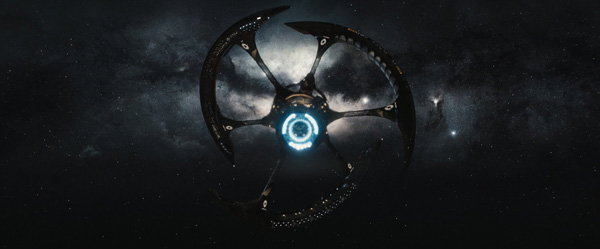
Bringing the 1,000m long space-cruiser Avalon to the screen required a huge digital build. This was another part of the project Pete devoted time to as soon as he joined the production.
MPC’s artists took on the design for Avalon from production designer Guy Dyas, and then began building a digital version of the ship and adding detail. Several further versions were created to support the varying levels of fidelity required throughout the film. A relatively lightweight model was used for animation blocking and first pass lighting tests and from there, the ship was up-textured and covered with small details to help with scale. Finally, an art-directed pass of extra matte-painted texture was applied whenever the camera focussed on specific areas.
The ship itself was based on six major modules, each with its own dedicated purpose and design motif. Of the three rotating hulls, one is dedicated to habitation and was inspired by designs of cruise ships. One is dedicated to cargo and was based on shipping freighters, and the third is dedicated to entertainment, referencing shopping malls and convention centres. “The design that Dyas handed off to us represented the general overall form that exists in the final ship,” Pete said. “We redesigned and embellished each of the modules, modified proportions and added features, as well as all of the surface detailing, but we never deviated from Dyas' original concept of the three helical hulls rotating around the core of the ship.
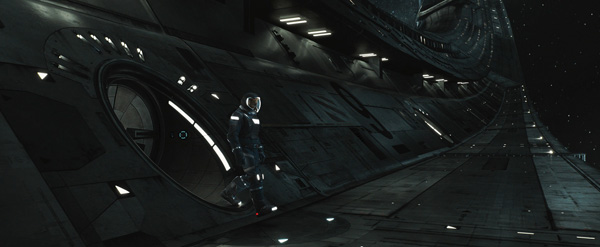
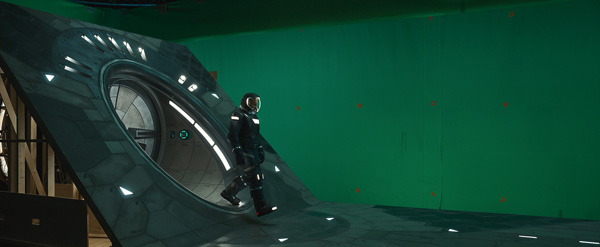
“The other three main modules are the crew command ring at the front of the ship, the power and engineering section at the core of the ship and, of course, the plasma ion propulsion system in the rear. Each of these six sections was designed and extensively detailed for wide and medium shots of the ship. For rendering, we had to limit the amount of micro detailing within the main Avalon asset - for any close up shots, we added detail as a separate bespoke asset, to be rendered separately and combined with deep compositing.”
Scale and Motion
Beyond panelling and surface detail, to sell the sense of scale they added banks of windows throughout the ship as a familiar scale reference, including visible room interiors based on the real sets for added depth and parallax. Adding thousands of little localised lights to the surface also established scale in the wide shots. Working with the ship locked to origin certainly made positioning the thousands of geo lights much easier.
With no foreground or midground atmosphere or elements to give a sense of speed, the artists relied on the flowing plasma on the front of the shield and the back of the thruster to suggest travel. They also added movement and parallax in the background stars and gas to reinforce the directional travel of the ship, though this was quite subtle.
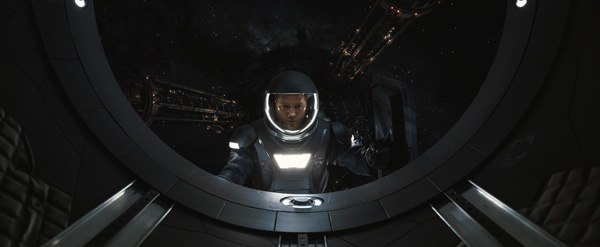
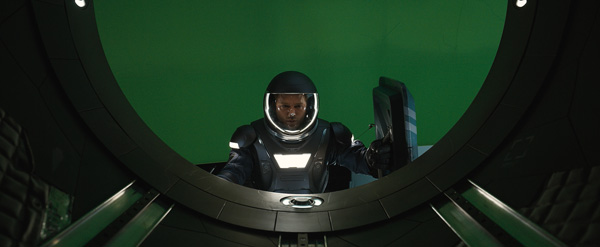
Designing the general camera blocking of the space exteriors was a combined effort between the previs and postvis artists, and MPC's layout and animation teams. Pete said, “Previs or Postvis would quickly block the camera with Erik and Morten Tyldum, while Layout and Animation continued to refine as necessary. Specific shots like those showing the actors floating in space were blocked as previs and techvis, to inform what we needed from the plates.”
Travelling in Style
For the Avalon’s luxurious interiors, Pete described Guy Dyas' production design of the practical sets as “all absolutely gorgeous”. He said, “It was a thrill to be involved with this much complex digital set work to complement them. The most challenging set of all was the colossal Grand Concourse, which ran the entire length of the kilometre-long ship. The first floor of the main area where most of the action takes place was a massive practical set build, but we were still required to build up six full stories and hundreds of metres on either end in full CG. We built dozens of shop fronts, furniture, holograms and other dressing throughout the giant set. Across the show, we built over 20 partial or full digital sets.”
Because numerous holograms appear in the production, MPC aimed to create a common logic, design and workflow that would support all of them. For example, to achieve appropriate interactive lighting within the set photography, they generated bespoke content for each set-up and drove it through various LED lighting configurations. But the hologram of an attendant near the beginning of the film required a unique approach because it was plate-based instead of computer-generated like the others.
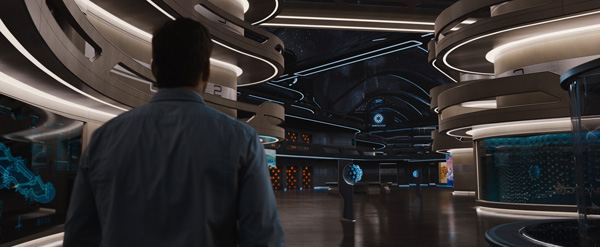
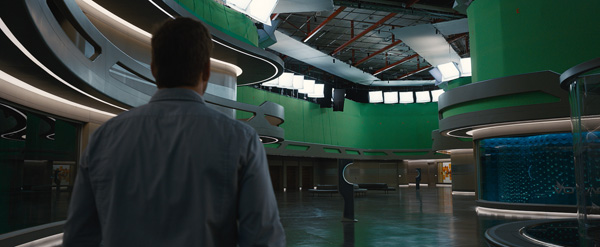
The performance was captured with a three camera array of Alexa XTs, then re-projected onto photoscans of the actress received from Captured Dimensions 3D scanning company. Pete said, “We extrapolated her motion into the geometry and then rendered it with an array of technical passes from Renderman, which then gave us the control that we required to match the hologram look of the other CG generated holograms in the film.”

Dangerous Water
The film’s effects are about more than stars and space-age machinery. At one point in the story, the ship undergoes a complete loss of gravity while one of the lead characters is submerged in a swimming pool. Visualising the event realistically on screen, while communicating extreme danger, was another of MPC’s jobs, combining drama with physics. Researching the look and behaviour of the water took some weeks. The team’s initial R&D tests showed that at this scale, the water would move so slowly that it wouldn’t express the required level of danger, and once they started applying stronger forces onto it, it would explode and completely lose its form.
Because quite a bit of NASA reference exists of smaller volumes of water and its behaviour in space, relative to surface tension and friction at those scales, they used these as a starting point to achieve something that looked real but was much easier to art-direct. “We actually found that the more complex we made the water, especially the main volume that traps the character, the more difficult it was to follow her struggle or connect with her terrifying performance,” Pete said.
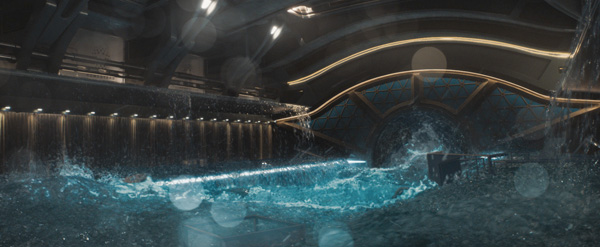
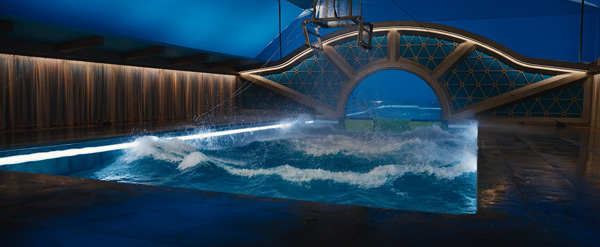
“Our solution was to greatly simplify the main water volume, in motion and form as well as the amount of refraction in the shading, and then add complexity around the edges of the compositions - things like collisions, splashes and motion within the volumes - to prevent it from looking too simplistic. These familiar water structures returned some complexity to the simulations, and also help our brains to accept all of this as water, despite looking and behaving so strangely. We also constantly fought the urge to make the water move too quickly. The extremely slow movement and progression of the volumes really adds to the large scale and overall inevitability of the event.”
Swim
Managing the water was one challenge. Adding the character inside it added another. Since the shading of the water was a combination of reflecting and refracting the environment, MPC needed to re-build the entire pool set in CG – consequently everything viewers see throughout this sequence except for the actress Jennifer Lawrence's performance is digital.
That meant that the VFX team’s only concern on set was submerging Lawrence underwater and capturing her plates. This required the help of SFX supervisor Dan Sudick and his team, who not only built the swimming pool on set, but also a 14ft cube tank with optical glass for the close-up shots, making it possible to capture some performance elements of her both in the tank and submerged in the pool against green screen.
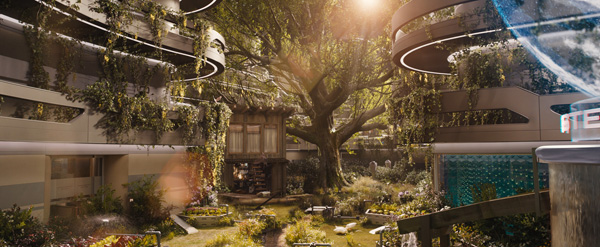
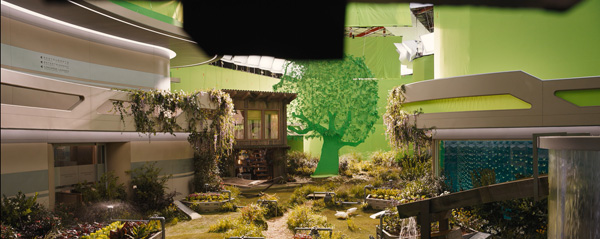
“In the practical pool we shot using a submerged Hydroflex camera set-up for Lawrence’s wide performance plates, and then used the SFX team’s smaller tank to photograph her close-up performances through much less water, giving us a much cleaner plate to work with,” Pete said. Unsurprisingly, the sequence required a lot of planning between the SFX, previs, techvis and VFX teams.
Starting with previs to flesh out the scene, a pass of techvis was done to break down how the performance plates of Lawrence submerged in the tank would be shot. From there, animation supervisor Gabrielle Zucchelli and his team further blocked the sequence, animating the various cameras and performance plate cards, as well as the general volume of the waters as geometric representations of the main water. In turn, the FX artists would bring those geometric volumes into Houdini, and perform countless simulations to turn them into what you see in the final film.
Last Star
A Red Giant passing by the ship creates another visually beautiful moment in Passengers. MPC referenced NASA photography of the sun for the look and the structure of the star. Its huge scale and depth was created using layers of fluid simulation, each representing a layer of stellar structure. Leaping from the surface were large flares driven by FX simulations.
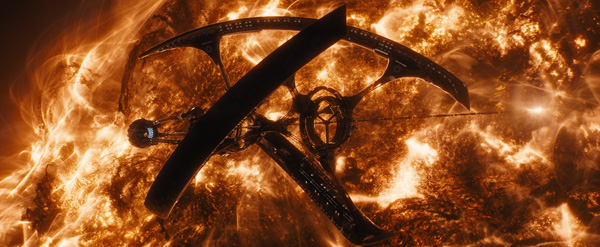
“We developed an animated DMP map for the photosphere, then volumetric chromasphere and corona FX elements layered on top, and then further simulated erupting prominences similar to those found in the sun,” said Pete. “One additional layer we recreated was made up of visible magnetic rays arching across the entire star. In fact, these rays only exist outside of the visible spectrum of our own sun, but they're so beautiful to visualise that we couldn't resist sweetening our star with this element.”
NASA photography of our own sun was referenced to isolate these layer elements within the star. For the magnetic rays, which they simulated for the entire star, other NASA photography was used that captures light beyond the visible spectrum.
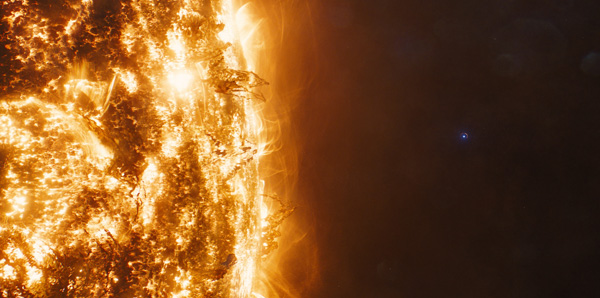
To manage so many layers shot by shot, both at render time and during compositing, they built the star using several elements, and in a way that re-used simulations across multiple shots. Simulations for the sequence were done primarily in Houdini, and all layers were composited in Nuke. “To compose specific elements within each shot, we would start by orienting the star to give us the specific details that we desired in frame, and then positioned the eruptions over top of that,” Pete said. “To achieve the exterior shot where we go from a very long lens to a wide lens, we needed bespoke elements from both FX and from DMP.” www.moving-picture.com/film
Words: Adriene Hurst
Images: Copyright 2016 Columbia Pictures Industries, Inc. All Rights Reserved


















